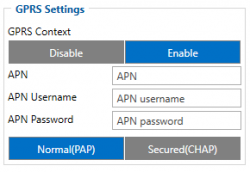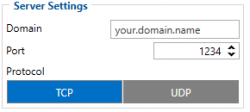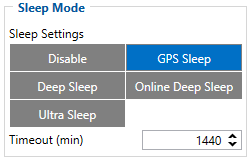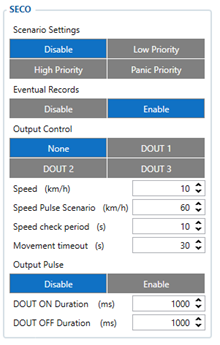Difference between revisions of "Secure vehicle disabling"
| Line 103: | Line 103: | ||
|- | |- | ||
| style="vertical-align: middle; text-align: center;" |00000000000000678E02000001774D66D5A8010F1267D220979FC600BE00C1050028<span style="background:#0b9768">018C</span>0004000400EF0100 | | style="vertical-align: middle; text-align: center;" |00000000000000678E02000001774D66D5A8010F1267D220979FC600BE00C1050028<span style="background:#0b9768">018C</span>0004000400EF0100 | ||
| − | F00100B300<span style="background:#0b9768" | + | F00100B300<span style="background:#0b9768">018C01</span>0000000000000000000001774D66D990010F12663120979BFF00BE00C1050028<span style="background:#0b9768">018C</span>0004 |
| − | 000400EF0100F00100B300<span style="background:#0b9768" | + | 000400EF0100F00100B300<span style="background:#0b9768">018C02</span>0000000000000000020000A65F |
|- | |- | ||
|} | |} | ||
| Line 117: | Line 117: | ||
| style="vertical-align: middle; text-align: center;" |00 00 00 00 | | style="vertical-align: middle; text-align: center;" |00 00 00 00 | ||
|- | |- | ||
| − | | style="vertical-align: middle; text-align: center;" | Data Field Length | + | | style="vertical-align: middle; text-align: center;" |Data Field Length |
| style="vertical-align: middle; text-align: center;" |00 00 00 67 | | style="vertical-align: middle; text-align: center;" |00 00 00 67 | ||
|- | |- | ||
| Line 123: | Line 123: | ||
| style="vertical-align: middle; text-align: center;" |8E (Codec 8 Extended) | | style="vertical-align: middle; text-align: center;" |8E (Codec 8 Extended) | ||
|- | |- | ||
| − | | style="vertical-align: middle; text-align: center;" |Number of Data 1 (Records) | + | | style="vertical-align: middle; text-align: center;" |Number of Data 1 (Records) |
| style="vertical-align: middle; text-align: center;" |02 | | style="vertical-align: middle; text-align: center;" |02 | ||
|- | |- | ||
| Line 169: | Line 169: | ||
|- | |- | ||
| style="vertical-align: middle; text-align: center;" |2’nd IO Value | | style="vertical-align: middle; text-align: center;" |2’nd IO Value | ||
| − | | style="vertical-align: middle; text-align: center;" |01 | + | | style="vertical-align: middle; text-align: center;" |01 |
|- | |- | ||
| style="vertical-align: middle; text-align: center;" |3’th IO ID | | style="vertical-align: middle; text-align: center;" |3’th IO ID | ||
Revision as of 20:52, 18 February 2021
Main Page > General Information > Usage scenarios > Secure vehicle disablingProject description
Motor vehicle theft is one of the world’s biggest concerns and the fastest growing crimes in many countries around the world. This great challenge for car rental agencies, car sharing clubs, businesses, state organizations and private car owners caused properly losses of over 6 billion US dollar globally in 2018. Luckily for them, Teltonika GPS trackers gave a remote secure engine cut-off (SECO) functionality that can help to recover a stolen vehicle and prevent the loss.
We glad that you decided to test our “Secure vehicle disabling” solution.
Here you will find how to prepare and to test this solution.
What you need for a solution?
- The secure vehicle disabling solution is supported by any Teltonika FMB series tracker which has one or more digital output (DOUT) which in this scenario is used to control fuel pump of the car.
- The SIM card in order to get data to your server.
- The secure engine cut-off (SECO) functionality is only available in Teltonika FMB series GPS trackers starting with the firmware version 03.25.10.Rev.110 or higher.
- FOTA WEB to remotely send the configuration to the device.
Installation
It’s important to well hide tracker, so it would not be a simple task for the thieves to find and unplug it. But also, please do not forget to follow mounting recommendations as well. Although devices have high gain antennas it’s important to mount devices with stickers on top and in metal-free space. The device should be firmly fixed to the surface or cables. Please make sure, that device is not fixed to heat emitting or moving parts.
During installation please follow recommendations in order to avoid damaging device and vehicle:
- Wires should be connected while the module is not plugged in.
- Be sure that after the car computer falls asleep, power is still available on the chosen wire. Depending on the car, this may happen in a 5 to 30 minutes period.
- When the module is connected, be sure to measure the voltage again if it did not decrease.
- The ground wire is connected to the vehicle frame or metal parts that are fixed to the frame.
Configuration
1. Prerequisites:
1.1. Read through First start guide
1.2. Understanding of possible Sleep modes.
2. Configuring SECO scenario
Parameter ID - Parameter name GPRS settings:
- 2001 – APN
- 2002 – APN username (if there are no APN username, empty field should be left)
- 2003 – APN password (if there are no APN password, empty field should be left)
Server settings:
- 2004 – Domain
- 2005 – Port
- 2006 – Data sending protocol (0 – TCP, 1 – UDP)
After successful GPRS/SERVER settings configuration, FMB130 device will synchronize time and update records to the configured server. Time intervals and default I/O elements can be changed by using Teltonika Configurator or SMS parameters.
Sleep settings:
- 102 – Sleep settings(0 – Disable, 1 – Gps sleep, 2 – Deep sleep, 3 – Online Deep sleep, 4 – Ultra sleep)
- Note: This scenario will not work with Deep Sleep and Ultra Deep Sleep since they disable the device's GSM module to save power.
SECO scenario settings:
- 12250 – Scenario priority
- 12251 – Eventual settings (0 – Disable, 1 – Enable)
- 12252 – Output Control (0 – None, 1 – DOUT1, 2 – DOUT2, 3 – DOUT3)
- 12254 - Speed (km/h)
- 12259 - Speed Pulse Scenario (km/h)
- 12255 - Speed check period (s)
- 12256 - Movement timeout (s)
- 12253 - Output Pulse (0 – Disable, 1 – Enable)
- 12257 – DOUT ON Duration (ms)
- 12258 – DOUT OFF Duration (ms)
- 7377 - Send SMS To
- 8377 – SMS text
Quick start: From default configuration to SECO detection in one SMS:
" setparam 2001:APN;2002:APN_username;2003:APN_password;2004:Domain;2005:Port;2006:0;102:1;12250:2;12252:1"
Pharsing SECO records
1.Prerequisites:
1.1. Open TCP/UDP port
1.2. Go to Java parser first start guide
2. Parsing example:
| Unparsed received data in hexadecimal stream |
|---|
| 00000000000000678E02000001774D66D5A8010F1267D220979FC600BE00C1050028018C0004000400EF0100
F00100B300018C010000000000000000000001774D66D990010F12663120979BFF00BE00C1050028018C0004 000400EF0100F00100B300018C020000000000000000020000A65F |
| AVL Data Packet | |
|---|---|
| AVL Data Packet Part | HEX Code Part |
| Zero Bytes | 00 00 00 00 |
| Data Field Length | 00 00 00 67 |
| Codec ID | 8E (Codec 8 Extended) |
| Number of Data 1 (Records) | 02 |
| Timestamp | 00 00 01 77 4D 66 D5 A8 |
| Priority | 01 |
| Longitude | 0F 12 67 D2 |
| Latitude | 20 97 9F C6 |
| Altitude | 00 BE |
| Angle | 00 C1 |
| Satellites | 05 |
| Speed | 00 28 |
| Event IO ID | 01 8C (AVL ID: 396, Name: Seco) |
| of Total ID | 00 04 |
| of One Byte IO | 00 04 |
| 1’st IO ID | 00 EF |
| 1’st IO Value | 01 |
| 2’nd IO ID | 00 F0 |
| 2’nd IO Value | 01 |
| 3’th IO ID | 00 B3 |
| 3’th IO Value | 00 |
| 4’th IO ID | 01 8C (AVL ID: 396, Name: Seco) |
| 4’th IO Value | 01 ( 0 - SECO DOUT OFF; 1- SECO DOUT pulsing; 2 - SECO DOUT ON) |
| N2 of Two Bytes IO | 00 00 |
| N4 of Two Bytes IO | 00 00 |
| N8 of Two Bytes IO | 00 00 |
| NX of X Byte IO | 00 00 |
| Timestamp | 00 00 01 77 4D 66 D9 90 |
| Priority | 01 |
| Longitude | 0F 12 66 3 |
| Latitude | 20 97 9B FF |
| Altitude | 00 BE |
| Angle | 00 C1 |
| Satellites | 05 |
| Speed | 00 28 |
| Event IO ID | 01 8C (AVL ID: 396, Name: Seco) |
| of Total ID | 00 04 |
| of One Byte IO | 00 04 |
| 1’st IO ID | 00 EF |
| 1’st IO Value | 01 |
| 2’nd IO ID | 00 F0 |
| 2’nd IO Value | 01 |
| 3’th IO ID | 00 B3 |
| 3’th IO Value | 00 |
| 4’th IO ID | 01 8C (AVL ID: 396, Name: Seco) |
| 4’th IO Value | 02 ( 0 - SECO DOUT OFF; 1- SECO DOUT pulsing; 2 - SECO DOUT ON) |
| N2 of Two Bytes IO | 00 00 |
| N4 of Two Bytes IO | 00 00 |
| N8 of Two Bytes IO | 00 00 |
| NX of X Byte IO | 00 00 |
| Number of Data 2 (Number of Total Records) | 02 |
| CRC-16 | 00 00 A6 5F |



